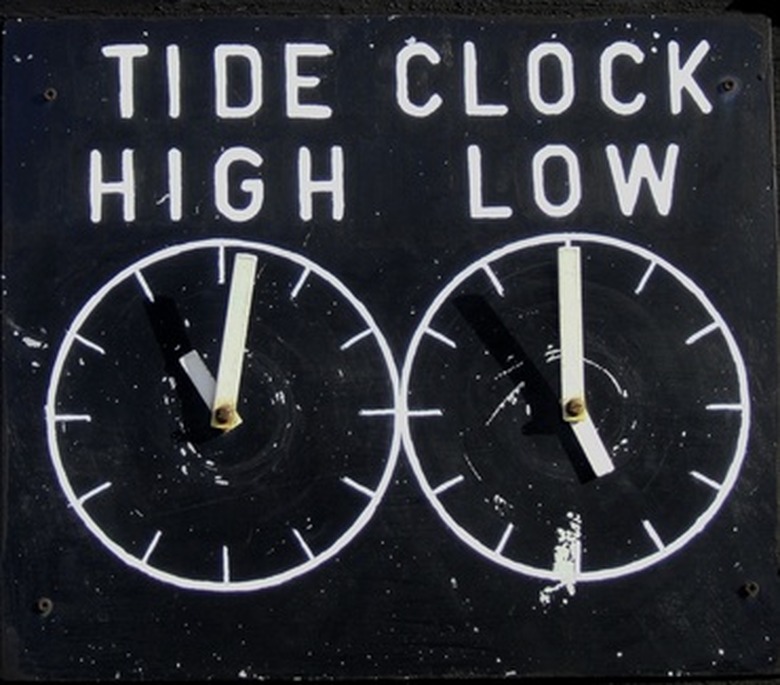High Tides & Moon Phases
The gravitational forces of the moon, Earth and sun affect the ocean tides. Each day, four different tides occur—two high tides and two low tides. During a full or new moon, when the Earth, moon and sun align, spring tides form, creating higher and lower than normal tides. During the first- and third-quarter moon phases, when the moon and sun are at right angles to the Earth, neap tides occur, creating low and high tides with minimal difference in heights.
Lunar Tides
Lunar Tides
According to The Astronomer Cafe, the moon's gravity does not directly cause the tides. As the moon pulls upward, the Earth is pulling downward—with the moon having a slight advantage. The sun also provides a gravitational pull, although much less than the moon. This gravitational pull, known as "tractive" force, causes the tides.
Rotation
Rotation
The moon revolves around the Earth, never in the same place at the same time. Thus, the high and low tides change by 50 minutes each day. The Earth rotates on an axis, and the moon makes one complete rotation in our sky every 25 hours (not to be confused with the 27-day orbit around the Earth), causing two tidal peaks and two tidal troughs every day, with a 12-hour separation between the two tides.
Spring Tides
Spring Tides
The combined gravitational pull of the moon (at new or full moon phase) and the sun creates higher high tides and lower low tides, known as spring high tides. Spring tides do not have anything to do with the season spring. According to the Astronomer Cafe, spring tides are approximately the same height whether at a new or full moon since the tidal bulges occur on opposite sides of the Earth—the side toward the moon (or sun) and the side away from the moon (or sun). The distance of the tides is not equitable because of the varying gravitation pulls between the sun and earth, and the moon and earth.
Proxigean Tides
Proxigean Tides
Proxigean spring tides occur approximately once every 1.5 years. These rare high tides occur when the moon is between the Earth and sun (new moon) and at its closest to the Earth (called proxigee).
Neap Tides
Neap Tides
During the first quarter or last quarter phase of the moon, when the sun and moon are perpendicular (at right angles) to each other in relation to the Earth, the tidal gravitational pulls interfere with each other, producing weaker tides, known as neap tides. Neap tides exhibit little difference between high and low tides.
Cite This Article
MLA
Parrott, Suzanne Fyhrie. "High Tides & Moon Phases" sciencing.com, https://www.sciencing.com/high-tides-moon-phases-6300036/. 24 April 2017.
APA
Parrott, Suzanne Fyhrie. (2017, April 24). High Tides & Moon Phases. sciencing.com. Retrieved from https://www.sciencing.com/high-tides-moon-phases-6300036/
Chicago
Parrott, Suzanne Fyhrie. High Tides & Moon Phases last modified March 24, 2022. https://www.sciencing.com/high-tides-moon-phases-6300036/
